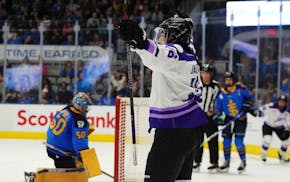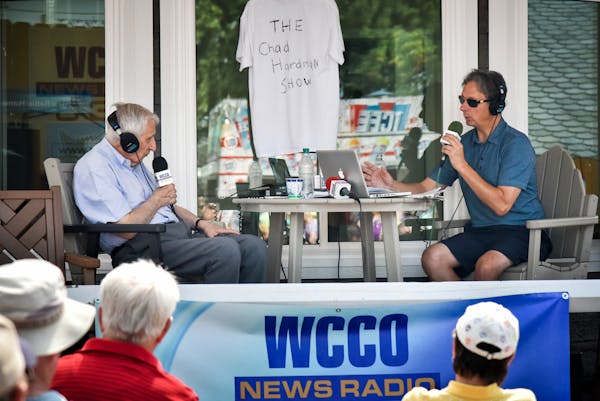The first row of the Memorial Stadium press box was cramped and it took maneuvering to get past the folding chairs pushed into the long plank on which to place a writing instrument.
The 1981 season would prove to be the last in the Brickhouse, with Gophers football moving to the Metrodome. On Sept. 12, the Gophers were opening vs. Ohio, while Iowa's nonconference opener was against mighty Nebraska.
I was there as a recently minted sports columnist in St. Paul. When it was announced that Iowa was leading Nebraska, it came to me that this was a chance to get a "rise" out of Sid Hartman, the Minneapolis legend, by saying:
"Looks like Hayden Fry might be the coach to finally turn around Iowa after Jerry Burns screwed up the program."
Burns, Bud Grant's offensive guru with the Vikings, was much loved by Sid. And now in Burnsie's defense, Sid came pushing his way through those folding chairs to set me straight in profane terms on the "bum rap" he received as Forest Evashevski's successor with the Hawkeyes starting in 1961.
For years, I used that as an example of the ease with which "The Great Man," as we came to call Sid, could be agitated.
Last Sunday, Hartman died seven months after his 100th birthday, causing days of reflection. The moment in Memorial Stadium flashed back and so did this realization:
Sid Hartman was the winner that day and not me.
I got to know Jerry Burns much better as the Vikings head coach, and in the decades since, and Burnsie is in the top handful of favorites that I've encountered in sports.
Hartman had known Burns for a quarter-century by 1981, and climbing over those chairs to defend a man who already was a great friend was praiseworthy rather than hilarious.
The roots of that Burns friendship added more perspective on Sid's career that ended with a column published on the morning of his death:
Here was a working sportswriter who went back to the late '40s and '50s, when Big Ten football was the center of our universe, and to get every piece of info, be it a boulder or a pebble, Sid found contacts on all teams.
When Evashevski came to the Twin Cities, first as the Iowa coach from 1951 to 1959, and then as athletic director, Sid would pick up "Evy" at the airport. He met Burns and Lou Holtz as Iowa assistants. He met George Steinbrenner as a rich kid serving as an assistant coach at Purdue.
Jon Roe, retired Minneapolis sportswriter, told of a Friday before a Michigan game when he followed Sid past four alarmed secretaries and directly into the office of Bo Schembechler, the notoriously irascible Wolverines coach.
"Sid Hartman's here; great to see you," said Schembechler, because Sid knew Schembechler from the '50s, as an assistant coach at Northwestern and Ohio State, before Bo became a dominating Wolverines coach.
Sid was a dynamo of networking several decades before anyone used the term to describe buddying up to people who might assist in a chosen field.
As a co-worker, you could kindly call him "driven" or candidly "self-obsessed."
For instance: Roe was covering his first game as the Twins beat writer in the 1970 opener at Comiskey Park. The Twins won 12-0, with new left fielder Brant Alyea going 4-for-4 with two home runs and seven RBI.
Sid was also covering for the Morning Tribune as a columnist and said to Roe: "I'm going to write the Alyea angle."
On Friday, Roe laughed and said: "All the Chicago writers were looking over, wondering, 'Why are those two Minnesota guys screaming at each other?' "
Then, Sid's longtime co-worker summarized what might be the reaction of tens of thousands of Minnesotans, as well as the "close personal friends" who survive.
"I've been feeling really weird this week and I finally figured out that this is it: The world doesn't have Sid anymore," Roe said. "My world since I first looked in a newspaper, as a kid growing up in north Minneapolis in the 1940s, always has had Sid. And now we don't.
"He was 100 and it still seems sudden."
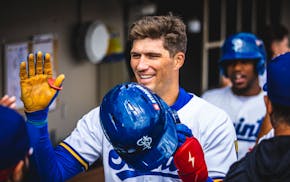
Twins power-hitting prospect drawing big-league attention
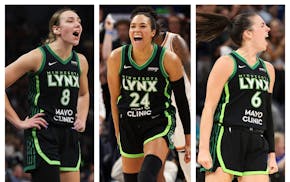
As Lynx 'run it back' this season, their bedrock is trio from the Class of '19
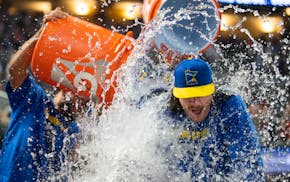
Paddack clings to perfection into the sixth inning, pitching the Twins past the Giants
Reusse: Twins play Giants, triggering Mays memories and a question: Can we get the Black players back?
